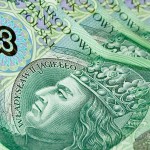The pound trimmed earlier gains to trade little changed against the US dollar, after a gauge of UK construction activity slowed its pace in February, retreating from 6-1/2-year high in the previous month.
GBP/USD hit a session high at 1.6717 at 08:10 GMT, after which the pair trimmed daily gains to trade little changed at 1.6676 at 10:14 GMT, adding 0.06% for the day. Support was likely to be received at February 27th low, 1.6617, while resistance was to be met at March 3rd high, 1.6751.
The UK Chartered Institute of Purchasing and Supply reported today that its index of construction output, a gauge of UK construction activity, fell to 62.6 in February from 64.6 in January, which was the strongest level since August 2007. Analysts had predicted a smaller decline to 63.2 in February. Values above the key level of 50.0 are indicative of expansion in activity. The slowdown in construction activity can be attributed mainly to heavy flooding in many regions of the UK, which experienced unprecedented amounts of rainfall last month.
A report by the UK Nationwide Building Society on Friday, revealed that home prices rose 0.6% in February, capping a 14th month of advances and after January’s reading was revised up to a 0.8% increase from initial estimate of 0.7%. The average value of UK homes reached 177 846 pounds or approximately $296 000 this month, which is a 9.4% increase from a year ago. Analysts had projected that house prices will rise by 9% in February, after a 8.8% gain in the previous month. The boost in the UK property market was mainly driven by low borrowing costs and easier availability of loans for home purchases.
In its quarterly inflation report, Bank of England revised its forward guidance, replacing the 7% unemployment threshold with a range of economic indicators, including spare capacity.
BoE said the unemployment rate will probably fall below 7% in the first quarter of this year, but at the same time underscored there was “scope to absorb spare capacity further before raising bank rate” from the current record-low 0.5%. BoE estimated an output gap between 1% and 1.5% of UK gross domestic product.
The central bank also raised its forecast for the UK economic growth in 2014 to 3.4% from 2.8% projected in November and predicted the first increase of interest rates will come in April 2015. Bank of England projected inflation of 1.9% in the next three years, below the central bank target of 2%.
The sterling has advanced 13% in the past year, being the best performer of 10-developed-nation currencies tracked by Bloomberg Correlation-Weighted Indexes, while the US dollar rose mere 0.9%.
Meanwhile, the US dollar capped the worst month in February since September even after Federal Reserve Chair Janet Yellen said the central bank will probably continue with its plan to gradually reduce the scale of monthly asset purchases. At the same time, policy makers will try to determine whether the weakness economy has recently demonstrated is due to temporal factors.
“Unseasonably cold weather has played some role,” she said in her testimony in front of the Senate Banking Committee on Thursday. “What we need to do, and will be doing in the weeks ahead, is to try to get a firmer handle on exactly how much of that set of soft data can be explained by weather and what portion, if any, is due to softer outlook.”
Yellen indicated that the Federal Reserve is abandoning its numerical threshold, that has linked any decision to increase borrowing costs to nation’s rate of unemployment. She also reiterated what the central bank has already said in a number of statements – that the scale back of monetary stimulus will continue at a “measured pace”, while the bond-purchasing program will likely be exited in the fall.
The greenback was supported yesterday after the Institute for Supply Management (ISM) reported that manufacturing activity in the United States expanded at a faster than projected pace in February, which eased concerns that economy may remain vulnerable. The corresponding PMI advanced to a reading of 53.2 last month from 51.3 in January, while analysts had expected that the index will climb less, to 52.0 in February. Values above the key level of 50.0 are indicative of expansion in activity.
Elsewhere, USD/JPY touched a session high at 101.95 at 06:05 GMT, after which the pair consolidated at 101.82, adding 0.36% for the day. Support was likely to be found at March 3rd low, 101.20, also the pair’s weakest level since February 5, while resistance was to be encountered at February 28th high, 102.30.





